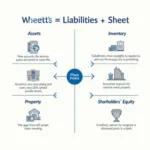When it comes to conquering the TOEIC exam, adopting strategic preparation is essential for achieving high scores. In this guide, we’ll walk you through essential Tips To Master TOEIC Sections With Ease, covering critical strategies for each section of the exam. Whether you’re aiming for a perfect score or looking to improve specific skills, these techniques will help you gain confidence and perform your best.
Breaking Down the TOEIC Sections
The TOEIC test is divided into two primary sections:
-
Listening Section: 100 questions (45 minutes)
- Part 1: Photographs
- Part 2: Question-Response
- Part 3: Conversations
- Part 4: Talks
-
Reading Section: 100 questions (75 minutes)
- Part 5: Incomplete Sentences
- Part 6: Text Completion
- Part 7: Reading Comprehension
Each of these sections requires specific strategies and practicing relevant techniques can make you more effective during the exam. Let’s explore proven tips to navigate each part effortlessly.
Listening Section
Mastering the Listening Part 1: Photographs
The Photographs section requires careful observation and effective note-taking. Here’s how you can excel in this part:
- Listen for Context: The narrative always describes the photo in the most general sense first. Pay attention to the action or subject in the picture.
- Eliminate Distracting Options: Focus on eliminating answers that do not describe relevant aspects of the photo. Small details often mislead test-takers.
“It’s not just about what you see — listen to what’s missing. Avoid distractions by focusing on clear contextual clues.” – Nguyễn Anh Quân, TOEIC expert
For additional tips to boost your overall TOEIC performance, check out secrets to ace TOEIC effectively.
Improving Performance in Listening Part 3 & 4: Conversations & Talks
These sections involve listening to longer conversations or talks and answering multiple questions. To thrive here:
- Anticipate Information from Speaker Intonation and Structure: Most important points in a conversation are emphasized with a change in tone. Learn to identify and react to these prompts.
- Note Key Words: Take mental or written notes of key points such as names, locations, and numbers.
- Time Management: Avoid getting stuck; if you miss one answer, move forward as the audio continues uninterrupted.
For more specific insights, explore our piece on secrets to ace TOEIC for listening section.
Reading Section
Tackling Reading Part 5: Incomplete Sentences
The key to mastering this part lies in grammar mastery and expanding your vocabulary. Here are some guidelines:
- Memorize Common Sentence Structures: Familiarize yourself with typical structures like subject-verb-object, verb conjugations, and conjunctions.
- Use Elimination Strategies: Knock out obvious wrong answers to improve your chances of picking the correct one.
- Context is King: Understanding the context will guide you to the best word choice.
Excelling at Reading Comprehension (Part 7)
Here’s how to tackle longer reading passages with ease:
- Skim, Don’t Read: Skimming helps you get the gist of paragraphs quickly. Pay extra attention to the first and last sentences of sections.
- Predict Possible Questions: As you skim, try to guess what kind of questions you might be asked based on key information such as dates, technical terms, or bolded elements.
- Answer in Order: Many TOEIC Part 7 questions follow the order of the text. Don’t waste time jumping around — work through questions systematically.
If you’re aiming for a high score within a tight timeline, try reviewing our quick TOEIC review methods in a month.
Essential Study Tips for Mastering All TOEIC Sections
Follow these general practices to enhance your overall TOEIC readiness:
-
Time Yourself in Practice: Simulate real exam conditions by timing each section while practicing. Familiarize yourself with the clock and manage your time accordingly.
-
Enhance Grammar and Vocabulary Skills: Invest time in learning common TOEIC vocabulary and idioms. Make a list of typical grammar rules tested in the exam and revisit them regularly.
-
Use Authentic Materials: Trusted online platforms or TOEIC prep books with mock exams are your best resources. They reflect the actual difficulty and patterns of the real test.
“Prioritize accuracy over speed in early stages, and then work on building speed closer to your test date. Accuracy first, timing second.” – Trần Kim Long, experienced TOEIC tutor
- Don’t Cram the Night Before: Start preparing months in advance. As you approach test day, focus on reviewing key vocabulary lists and skimming previous exams to calm nerves.
For more specific day-of test insights, be sure to read tips for TOEIC test day with real exam practice.
Sample Weekly Study Plan to Follow
Here’s a quick one-week plan for an average TOEIC learner looking to hone their skills:
| Day | Focus Area | Activity Description |
|---|---|---|
| Monday | Listening Practice | Work on Part 1 and 2 with focus on eliminating incorrect responses and identifying perfect matches to the prompts. |
| Tuesday | Grammar Review | Daily review of common sentence structures + expanded vocabulary lists. |
| Wednesday | Reading Comprehension Practice | Focus on skimming techniques across different passage types. |
| Thursday | Consolidated Practice Test (Listening) | Complete a full listening practice test under simulated conditions. Answer and review mistakes. |
| Friday | Focus on Incomplete Sentences (Part 5) | Work on eliminating wrong sentence choices. Review grammar rules associated with your errors. |
| Saturday | Consolidated Practice Test (Reading) | Complete a reading test, simulate real-time pressure. Track where you spent too much time — refine pacing. |
| Sunday | Review and Rest | Soft review of concepts while giving your mind a break to refresh for the upcoming week. |
![]() Sample study schedule for TOEIC preparation
Sample study schedule for TOEIC preparation
Conclusion
With the right approach and consistent practice, mastering the TOEIC sections becomes significantly easier. Use these tips to master TOEIC sections with ease and develop your skills across all the parts of the exam. Stick to a reliable study schedule, enhance your vocabulary, and practice under actual exam constraints to watch your TOEIC score soar.
Frequently Asked Questions (FAQs)
1. How much time should I dedicate to studying for the TOEIC?
It depends on your current level, but typically, 1–2 hours a day for two months is a good benchmark to aim for.
2. What is the most difficult part of TOEIC?
Many test-takers find the Listening section, especially Part 3 and 4, more challenging due to the fast-paced conversations.
3. Can I improve my TOEIC score in one month?
Yes, focusing on intensive practice and key areas like vocabulary and reading comprehension can lead to score improvements. See our guide on quick TOEIC review methods in a month.
4. Is reading or listening more important for a high TOEIC score?
Both sections carry equal weight, so it’s critical to balance your study time between reading and listening skills.
5. Should I guess if I don’t know the answer?
Absolutely. There’s no penalty for wrong answers in TOEIC, so never leave a question blank!
6. What resources should I use to practice for the TOEIC?
Look for official TOEIC practice tests and reliable online platforms to ensure you’re practicing with exam-like material.
7. How can I stay calm during the exam?
Breath control and regular breaks during your prep sessions can help train you to stay focused and relaxed on test day.




